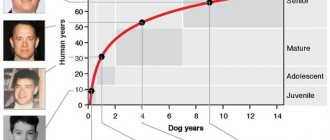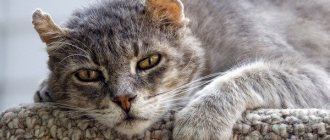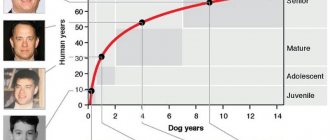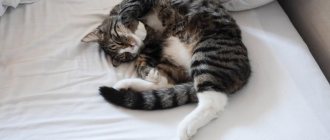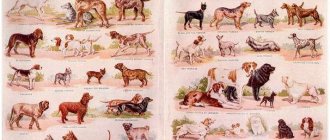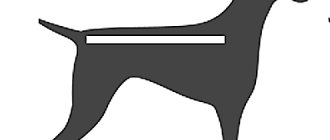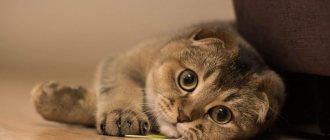Why do you need to know the age of cats?
Having found out how old your pet is, you can properly adjust its care, balance its diet, and better monitor its health. It is impossible not to take into account changes in years, because this will have a bad effect on the standard of living of your mustachioed friend. Why else might such knowledge be useful:
- Determine the level of physical activity, the intensity of which decreases with age. Excessive play with an elderly person will have a bad effect on the joints and cardiovascular system. But for younger people, lack of activity will negatively affect physical development or lead to dangerous obesity.
- The cat's health is monitored in accordance with physiological changes. For example, only older individuals are susceptible to cataracts. Therefore, caring for mature pets should be more thorough.
- The selection of diet must be correlated with the characteristics of the period of life. Nutrition must meet the needs of the body. For example, older cats find it difficult to eat dry food because their teeth have worn out and become more brittle. They are no longer adapted to rough food.
Knowing the degree of maturity, it is not difficult to help your mustachioed friend develop fully and provide him with good care and proper nutrition. The quality of life and attention of the owner will prolong the cat’s life.
Let's make an analogy
It is not so difficult to find out the age of a domestic cat. To do this, you can simply look at the veterinary passport of your purebred pet. If the cat was picked up on the street or there is no information about its date of birth, then a veterinarian can help determine its age. This is done by assessing their condition. However, the announced figure is unlikely to be informative and will give a complete picture of the youth or old age of the animal. There are several more options for calculating the age of a cat.
Most cat breeders know that if the pet’s years are multiplied by a factor of 7, then this will correspond to the person’s age. Taking this method as a basis, it turns out that a kitten up to one year old in its mental development resembles a 7-year-old child. However, this simplified method is incorrect. In fact, a cat that is over one year old is developmentally equivalent to an adult 18-year-old person.
Experienced breeders and experts in the field of zoopsychology offer a more complex, but correct method for calculating the age of a cat. According to this method of recalculation, in the first year of life, when the animal develops physically, the formation of the pet’s psyche occurs, equivalent to the age of a child of 15 years. A cat's youth is characterized by the blossoming of physical fitness and puberty.
Young animals during this period are already similar to adults, but continue to play and frolic with pleasure. Veterinarians recommend that owners at this age not engage in breeding, but wait 1.5 - 2 years.
When a cat is 2 years old, it is approaching 24 years of human life. This is the most optimal time for the first birth in females and mating in males. The most active and cheerful time lasts for pets until they are 3 years old, when their age corresponds to 28 years by human standards.
After 2 years, 4 should be added to each previous year. Thus, an adult cat that is 6 years old will correspond to the age of 40 years for a person. The period of life of pets from 2 to 6 - 7 years is characterized by the most active sexual functions. After the seven-year mark, veterinary specialists and breeders recommend stopping reproductive function to prevent health problems and the risk of having defective offspring.
This technique most accurately helps to understand how age is calculated in cats. After the pet turns 16 years old, which corresponds to extreme human old age (a person would be 83 years old), 3 should be added to each year.
Periods of a pet's life
According to research by zoological scientists, the life of a mustachioed friend goes through different stages. Each of them is characterized by its own physiological, behavioral and psychological characteristics. There are 6 stages of cat age:
- Childhood
lasts from birth to six months. This is a time of rapid growth, as well as formation until the onset of puberty.
- Youth
– period from 6 months to 2 years. This is the stage of preparing the body for adulthood. The growth of the mustachioed friend continues, but at a reduced pace.
- Heyday
– time from 2 to 7 years. This is the peak of increased physical and mental activity: the pet has a strong skeleton, healthy teeth and beautiful coat.
- Maturity
– stage from 7 to 11 years. Then a slight decrease in physical activity begins, but in general the cat’s age is not so noticeable.
- Elderly age
– stage from 11 to 15 years. Vitality is gradually lost. The appearance and quality of fur, claws, and teeth deteriorate. The first health problems appear.
- Old age
. After 15 years, a decrease in various types of activity is clearly expressed, sleep time increases, and an increased risk of various diseases arises.
This division into stages becomes fundamental when understanding the degree of maturity of a cat. Awareness helps in proper care and maintenance. Veterinarians quite easily determine the age of a cat based on physiological data and behavioral characteristics of each period.
Stages of cat development by human standards
A person has the following stages of life:
- childhood period;
- adult stage;
- mature age;
- elderly stage and old age.
Childhood period
At this stage, the external boundaries are blurred in cats and humans. There are cases where girls as young as 12 become mothers. At the same time, the period of human growth ends at 25 years. With reservations for the period of childhood, cats are considered to be up to 6 months old. From this time on, it is customary for pets to be switched to two meals a day; their increase in food consumption stops.
Pharmacists differentiate the dosage of tablets according to the following principle: for adults and children over 12 years of age, or for children under 12. Restrictions on the use of a number of veterinary drugs for kittens are lifted upon reaching the age of six months.
Adult stage
The period of adulthood in a person is conventionally divided into adolescence, young adulthood and adulthood itself. Otherwise, these ages can be called adolescence and childbearing. A cat is considered a juvenile if it is older than 6 but younger than 12 months. The animal is ready for fertilization, but it is not recommended to breed a pet before 15-18 months. A cat up to two years old and a person up to 25 years old are considered young.
Theoretically, women under 40 years of age are considered to be of reproductive age; in practice, it is not recommended to become pregnant after 35. The breeding use of cats is limited to 5-6 years. In order not to spoil the breed, producers of both sexes are recommended to be neutered at this time. Manufacturers of ready-made food produce Adult food for cats from 1 to 7 years old. Pets over 7 are considered seniors and special food is prepared for them.
Be sure to read:
Valerian for cats: what is it for, how does it affect the animal, what will happen if given, benefits and harms
Mature age
A person is considered mature between the ages of 40 and 60. At this time, symptoms of chronic diseases appear, a person gives up bad habits and extreme rhythms of life. Change is greatly influenced by reason and life experience.
Not so with cats. Animals from 7 to 10 years old are considered mature. Reason and life experience do not have a significant impact on the lifestyle of pets. Cats continue to regularly scream during menstruation and bear offspring twice a year. Cats become even lazier than before, but continue to participate in the struggle for procreation. Everything is true
Elderly stage and old age
The concept of an elderly person is individual. For some, decrepitude occurs before 50, while others are vigorous and cheerful even after 80. For outside observers, it seems that time has stood still for cats. The pet also meows invitingly and brings kittens like 10 years ago. But now, some kind of lump has appeared on her stomach, it is gradually growing.
My health is gradually deteriorating. The cat endures pain and falls into a helpless state several weeks or days before death.
Determining the number of years lived
It is difficult for an inexperienced owner to determine the age of a cat without the help of a specialist. An experienced breeder is able to accurately indicate the age of his pet, but it would be best to show the animal to a veterinarian. The specialist will not only tell you how old the cat is, but will also paint a general picture of her condition. In veterinary practice, there are several criteria for determining the age of animals.
According to the condition of the teeth
Veterinarians can easily determine the amount of time an animal has lived by looking at its teeth. This method is effective for different individuals, from kittens to old people. This fact can be explained by the fact that the schedule for replacing baby teeth with molars is quite strict. The strength of the fangs and their color are the best indicators of not only the health of the pet, but also its maturity.
| Number of years | Condition of the oral cavity |
| 5 weeks | Baby teeth erupting |
| 6 months | Dairy products are completely replaced by permanent indigenous ones. |
| 1 year | The canines should be in the best condition, white and strong |
| 1.5 years | The incisors on the lower jaw begin to wear off |
| 2 years | The enamel becomes yellow in color and traces of deposits appear |
| 4-5 years | The incisors on the lower jaw wear away very noticeably |
| 6 years | Abrasions on the fangs begin to appear, dark spots appear on the enamel |
| 7 years | The surviving incisors are completely worn away. Fangs in poor condition |
| 10 years | Half of the teeth are lost |
| 13-15 years old | Fangs fall out |
Table 1. Age of cats according to dental condition
The influence of time lived on the condition of the oral cavity is very noticeable. Unfortunately, the owner rarely pays attention to this and is in no hurry to change the pet’s diet when necessary. It would be a good idea to make periodic visits to a veterinarian-dentist, who will assess the condition of the oral cavity and tell you how to prevent teeth from wearing out too early.
According to the condition of the coat
The pet's appearance helps determine a cat's age. This method of definition is the most understandable for a non-specialist. However, veterinarians do not consider this method to be unambiguous, because environmental factors and living conditions can affect the condition of the coat and skin. Good care plus a balanced diet allows you to maintain an excellent appearance even in older individuals. There are only generalized signs that help determine the degree of maturity of a pet.
| Number of years | Type of coat |
| 0-1 | Hair is soft and shiny. There are no signs of baldness or tangles |
| 1-7 | A healthy individual has fur in excellent condition: smooth, fluffy, with a good pattern. Gray hair is completely absent |
| 8-15 | The hair is dull and thin. Tangles and bald spots often appear |
Table 2. Age of cats according to coat condition
This method of determination has many disadvantages. Representatives of some breeds have no hair at all or their hair is quite short and coarse. This makes it much more difficult to figure out changes over the years.
According to changes in the musculoskeletal system
Proper distribution of physical activity helps maintain energy and lightness until old age. In this regard, changes in the skeleton do not become a sign that the owner pays attention to. However, for a veterinarian, bones and muscles are the best indicator of a pet's maturity.
In mature individuals, the muscles are developed in proportion to the skeleton. After final puberty, the pet acquires the characteristic features of the breed’s exterior. In addition, a mature musculoskeletal system has a number of common features:
- pronounced muscle relief;
- gracefulness and ease of movement;
- increased activity, endurance.
In older animals, after 8 years of life, the first signs of aging begin to appear. They are not too noticeable, but already create inconvenience for an active individual. The changes are clearly visible in short-haired breeds. Such manifestations include:
- Sunken spine, protruding shoulder blades.
- Lack of ease of movement. Sometimes they are given to an elderly pet with great effort.
- The volume of muscle tissue decreases noticeably, and the remaining muscles become decrepit.
Aging felines often suffer from thinness. If the pet has excess fat, then some criteria are noticeably smoothed out. The most obvious sign of this is difficulty moving.
According to eye condition
The eyes are not the most accurate way to determine old age, since noticeable changes only begin in older animals. Until the age of 10, the eyes of kittens and mature cats are almost no different.
An indicator of old age is the iris, which can be:
- cloudy;
- covered with patches;
- with uneven, blurry edges;
- with faded color.
An eyesore also indicates that the cat's youth has passed. A non-obvious sign is that the eye becomes very wet, but this does not happen in every older cat.
Monitor your cat's aging process
When calculating your cat's age in human years, it is important to understand that various factors can affect the comparative age of your cat and human. These may include variables such as heredity, diet, environment, and physical and medical care.
While it's likely that you have no say in heredity, you do have control over other factors that influence your cat's aging process. For example, if you have an older cat, you can meet their needs by exercising weekly, brushing their hair and teeth daily, and feeding them the right diet.
However, if you have a kitten, you may want to pay attention to key developmental milestones in the first eight weeks. In the first week, you will want to understand that your kitten will be born with her eyes closed and ears curled, and will weigh somewhere between 90 and 100 grams.
Around the third day, you can expect the umbilical cord to fall off. After seven days, the weight should double. Watch for your kitten's eyes to open and baby teeth to begin to form in the second week. During the third week, the ears become pointed and several kittens begin to explore their environment.
By the fourth week, you can expect more teeth and improved hearing. After weeks five to eight, you can expect your kitten to have full sight, try to eat solid food, and see changes in eye color and activity. During this time, you should prepare for your kitten's first vaccination.
Cats of any age should be closely monitored when it comes to things like development, nutrition, and vaccinations.
© shutterstock
Cat to human age ratio
Experts name three methods for comparing the life periods of people and cats. Unfortunately, none of them is considered absolutely accurate, so the age of a cat by human standards is always only approximate.
First way
The starting point is 1 year. This period is the time of puberty of the animal. This age corresponds to 16 years of age. Another milestone is 2 years, at which time the formation of the pet’s character and habits ends. This happens at 24 years old by human standards. After 3 years, the pet’s maturity is determined using the formula:
x = 24 + ((number of years – 2) * 4)
For example, your cat is 6 years old. This means you need to subtract two (you get four), multiply by four (you get 16), and then add twenty-four. It turns out that a six-year-old cat, by human standards, is exactly 40 years old.
Second way
Another method is to calculate the number of years in each of the three periods of life. This method is considered more accurate than the previous one due to the detailed nature of the calculations. The degree of maturity can be determined using the following formulas:
| Number of years (z) | Formula |
| 1-5 | x = z * 7 |
| 6-11 | x = (z – 5) * 4 + 35 |
| 12-20 | x = (z – 11) * 3 + 59 |
Third way
This technique has a scientific basis and was developed by veterinarians together with zoological scientists. The basis is an indicator that takes into account the intellectual, psychological and physiological level of development, converting a cat’s age to a human age in the table.
| Number of years of the cat | Number of years of a person |
| 1 | 18-19 |
| 2 | 25 |
| 3 | 32-33 |
| 4 | 35-36 |
| 5 | 40-41 |
| 6 | 43-45 |
| 7 | 46-47 |
| 8 | 50-52 |
| 9 | 55-56 |
| 10 | 60-62 |
| 11 | 64-65 |
| 12 | 67-68 |
| 13 | 70 |
| 14 | 72-73 |
| 15 | 75 |
| 16 | 76-77 |
| 17 | 78 |
| 18 | 83 |
| 19 | 91 |
| 20 | 100 |
Table 3. Age of a cat by human standards
Despite such a detailed table, it should be remembered that an accurate comparison of two fundamentally different biological species is almost impossible. A cat's age by human standards can vary. The rate of development of human and animal organisms has few similar characteristics. Here it is worth taking into account the difference in breeds and gender differences.
Calculation using specialist observations
Many experts are inclined to believe that during the first five years, each year a cat lives is equivalent to 7 human years.
- From 6 to 12 years old, each year a pet lives can be counted as 4 human years, and after 12 years as three human years.
- Using this calculation, we find that an 8-year-old cat lived 5 x 7 + 2 x 4 = 43 years by human standards.
Is it possible to increase the lifespan of a cat?
Any owner dreams of having a furry family member to please him for as long as possible. And he has the power to do everything so that the cat lives for 15, or even 20 years. What will prolong the life of your beloved four-legged animal:
- Annual vaccination
. The kitten is vaccinated in the first 2-3 months of life and then the procedure is repeated every year. This will protect both your indoor and outdoor cats from the most terrible viruses with a high fatality rate.
- Routine examination by a veterinarian
. Non-pedigreed cats get sick less, so they can be shown to the veterinarian during vaccination once a year - just ask the doctor about this. Pedigree animals and animals with chronic diseases require more frequent visits to the veterinary clinic - the frequency will be determined by the veterinarian himself.
- Sterilization and castration
. If you do not plan to breed kittens, be sure to sterilize your pet - this will help avoid many problems, including diseases of the genitourinary system and mental disorders.
- Attention to any changes in your pet's behavior
. Has your cat started drinking a lot? Stopped sleeping in your favorite chair? Is he limping? Are there strange discharges? Even such little things require close attention from the owner. The first action in case of suspicion is to call the veterinarian, he will tell you whether you need to take the animal to the clinic or if you can watch it at home.
- Purity
- the key to health. Cats groom themselves, but this is not enough to maintain hygiene. For example, long-haired breeds cannot cope with caring for a luxurious fur coat, and it must be combed regularly to prevent parasites or skin diseases. It is necessary to thoroughly rinse the cat's food and water bowls, disinfect the trays, and wash the bedding.
- Nutrition
must be maintained at a high level. It is not so important what you feed your cat - the main thing is that the selected diet suits it. A young cat will benefit from both natural food and high-quality dry food. But kittens and elderly individuals require a special menu, which cannot be cheap. Therefore, before getting a cat, think about the fact that in old age, in 95% of cases, it will require greater expenses than in youth.
- Treat your cat like a family member
. Consider the nature of the pet and its needs. If she doesn't tolerate loneliness well, you shouldn't leave her in the apartment all day. And on the contrary - if the kitty loves isolation, respect her personal space. There are many such points, and if you do not pay attention to the psychological state of the animal, it will constantly be sick and will not live very long.
This is not a complete list of what a loving owner can do. The most important thing is to be attentive and patient, treating your pet as a younger member of the family. Then he will live very long and happily.
How to extend the life of a cat
The following factors influence a cat's lifespan:
- Self-walking. Vagrancy should be avoided; in urban conditions, letting a cat out of the house unattended is doubly dangerous. Such walks often end in injury, incurable infection (viral leukemia, immunodeficiency) and death. It is better to fence the dacha area so that the cat cannot leave its boundaries, or equip it with a spacious enclosure.
- Nutrition. The diet should be fresh, balanced, and appropriate to the age of the animal. Industrial feed should be chosen at least premium class. If ready-made food is not suitable for some reason, the cat should be prepared separately; you should not feed it food from the human table.
- Regular vaccination. It is necessary to vaccinate all pets, including those who do not leave the house (the causative agent of the infection can come from the outside, from the owner’s shoes or clothes).
- Control of reproduction. It is best to neuter your pet. In fertile cats, do not give birth more often than once every 1-2 years (at the age of no earlier than 2 years and no later than 6-7).
- Veterinary control. At the first sign of illness, your pet should be seen by a doctor. For older cats, an annual preventive examination is recommended, including a general examination, blood, urine and feces tests, and consultation with a cardiologist.
- Living conditions. The cat should have a resting place in the house, where no one will disturb it, and enough toys for active pastime. The litter tray must be placed in a secluded place and kept clean.
Compliance with the rules of keeping, love, creating a calm and friendly atmosphere in the house is the key to a happy and long life for your pet.
Long-livers in the world of cats
You always want to believe that a pet will become a happy exception and turn into the smartest/obedient/beautiful/healthy/long-living cat in the world. And indeed, this sometimes happens - and not so rarely. But some cases are like a miracle.
Long-lived breeds
Before getting a purebred cat, it is advisable to find out what diseases it is predisposed to and how many years it lives on average. Breeds that can easily live 18-20 years include:
- Savannahs (one of the most expensive cats);
- Siamese cats;
- Manx;
- Persian cats;
- rexes (Cornish, Devon and others);
- Egyptian Mau;
- Burmese;
- Russians are blue.
Their life expectancy is due to good genetics and good health. However, this list can include the most common “breed” in the world – an ordinary yard cat. Outbred mustachios easily break records, living up to 20 years with good care and the absence of diseases.

